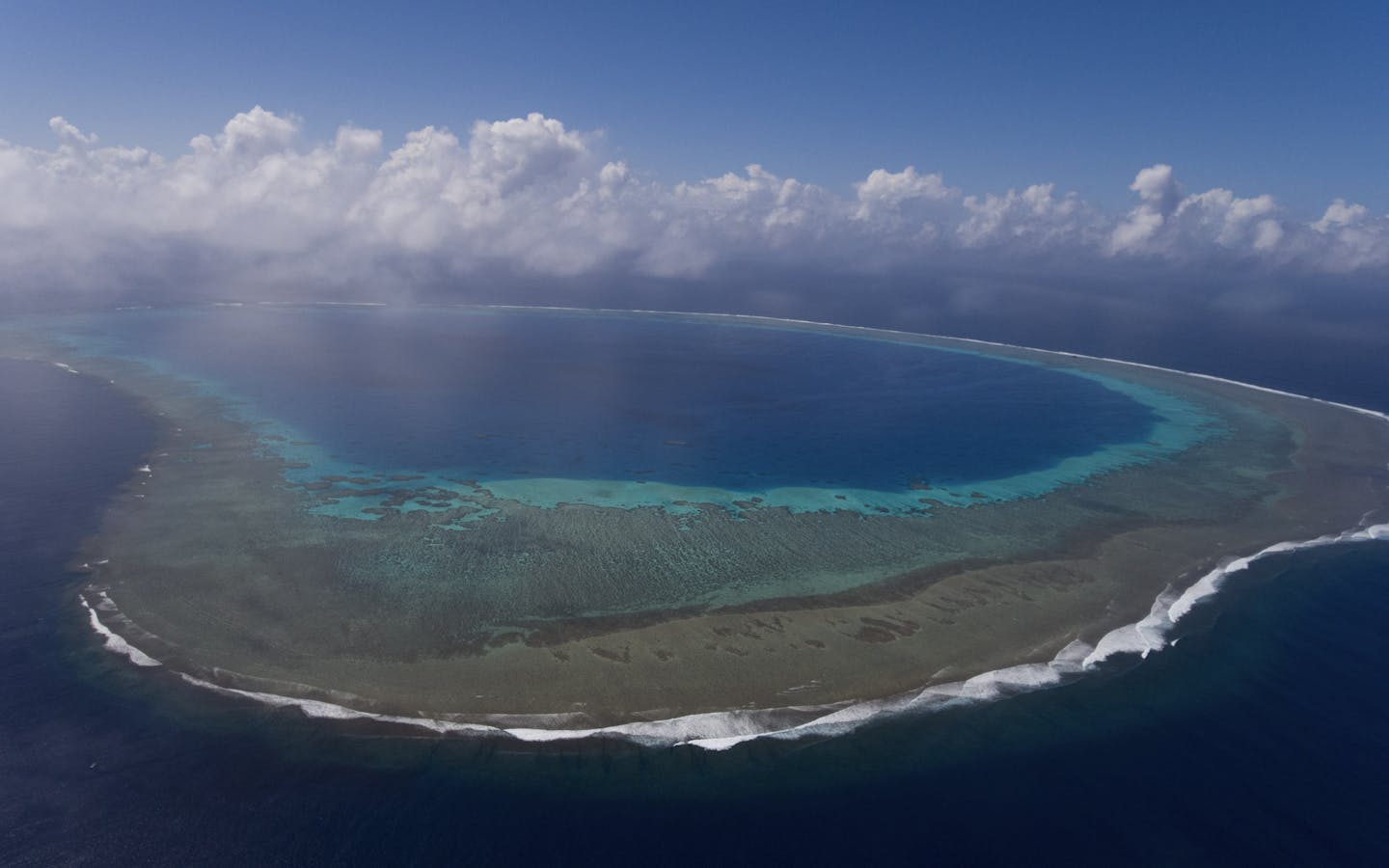By Roko Josefa Cinavilakeba
June 2, 2017
Editor’s note: Last month, a team of conservationists set sail from the island of Fiji. Their mission: to survey marine life in the Lau Islands, an unheralded group of islets scattered over thousands of square miles of the South Pacific.
They were seeking out species — but also clues to the health of these little-explored waters. With warming seas wreaking havoc on coral reefs and upending fish migrations throughout the Pacific, managing this area will be crucial for ensuring its resilience to climate change — and ensuring that it can continue to provide food and livelihoods for the thousands who call the Lau Islands home.
This story, part of a series, offers the view of a local leader: Roko Josefa Cinavilakeba, Paramount Chief of a cluster of islands within the Lau Group. Here, he describes how decisions about marine management are made for a people completely reliant on the sea.
The Lau Islands scarcely appear on any map of the world. Even on Google Maps, one must zoom in quite closely to view the flicker of dots that make up the Lau Islands.
The islands’ ecological treasures are as unique as they are hidden, but they face a number of threats from overfishing, poaching and climate change. Sustainable management of the waters and reefs of the Lau Islands is critical.
Fortunately, the people of the Lau Islands have been practicing their own form of management for a long time.
It is fascinating to see that the management strategies being used by the people of Lau have been passed down through generations — yet they are completely in sync with modern-day management philosophy. The tabu (traditional fishing closure), for example, is a management tool adopted through traditional protocols before the idea of marine protected areas was ever introduced.

A traditional ceremony with chiefs, community members and Conservation International staff at which the Navatu reef was declared a tabu area, off-limits to fishers.
Yet new management approaches are helping to address the more modern-day problems facing the islands. For example, the chiefs of the islands of Lau signed an agreement to adopt the Lau Seascape as a development approach to ensure sustainable resource management to benefit current and future generations. In a seascape approach, governments, businesses, communities and other stakeholders work together to conserve marine ecosystems and to promote well-being.
One of the most detrimental problems faced in the Lau Islands is poaching. Typically at night or on Sunday, when local communities observe the Sabbath, ships can be seen laying out longlines or trawling through outlying reefs and atolls. Commercially important species such as sea cucumbers are collected without regards to species or size; now the population of sea cucumbers — an economically and ecologically important species — has been badly depleted. Local fishers have seen reduced sizes in other commercially important coral reef species such as groupers, snappers and parrotfish.
The isolation of the Lau Islands makes surveillance a priority to stop poaching from foreign commercial fisheries. Due in part to the remote location of the islands, there is less mobility and connectivity from the main islands of Fiji — so the current environmental status of the Lau Islands is poorly understood.
The survey, led by Conservation International, seeks to change that. Good data is an integral part of effective decision-making, and so the research conducted by Conservation International and its partners will greatly assist me in making the right decisions to ensure that there are resources available for our future generations.
The recent survey by Conservation International and its partners included dives in a few sites that have never been surveyed, such as the Navatu reef (by all accounts, one of the best dive sites the team had ever experienced). All the data collected were shared with me, as the traditional custodian of the Totoya Islands, which include Totoya, Vanuavatu and Navatu. I was eager to share the information with my people, knowing the prospects for managing our resources in a sustainable way.
Discussion among the local leaders resulted in a pledge from the people to establish a marine protected area around the Navatu reef. The process demonstrates an effective management strategy unique to the Pacific Islands, with the goal of maintaining and growing the relationship with the people and leaders of the Lau Group to use the findings from this survey in the decisions made by traditional leaders in support of the Lau Seascape.
Conservation International followed all traditional protocols to respect the hierarchy and to present their scientific findings as a tool for effective management plans by the traditional leaders.
Protecting our oceans against the threats they face requires us to work together. It is clear that the people and the leaders of Lau are ready to take the necessary steps to sustain their traditional lifestyles while creating socio-economic development that is based on sustainably managing their resources.
Roko Josefa Cinavilakeba is Paramount Chief of the Yasayasa Moala cluster of islands in the Lau Islands.
Other stories in this series
» The Lau Islands: Dive in to a little-explored region
» Unexpected finds: Survey sheds new light on reefs
» New species: Survey finds species new to science
» Lau reefs offer clues to protecting coral
» In Lau, a key species in decline
»
300 hours underwater
»
Epilogue: Discoveries in the Lau Islands will pave the way for Fiji's conservation future

